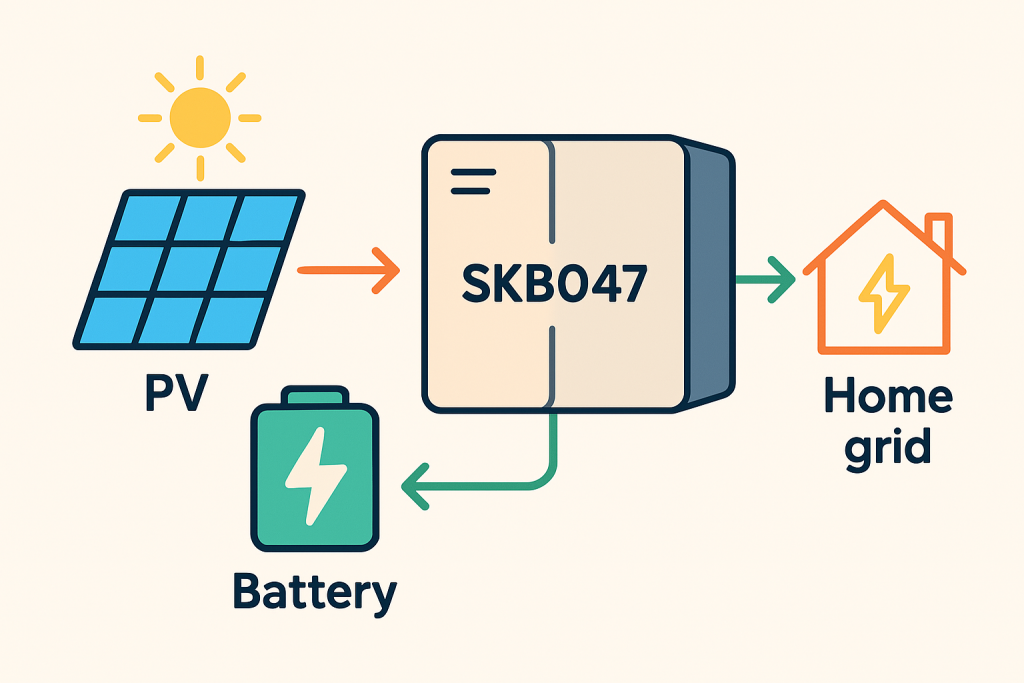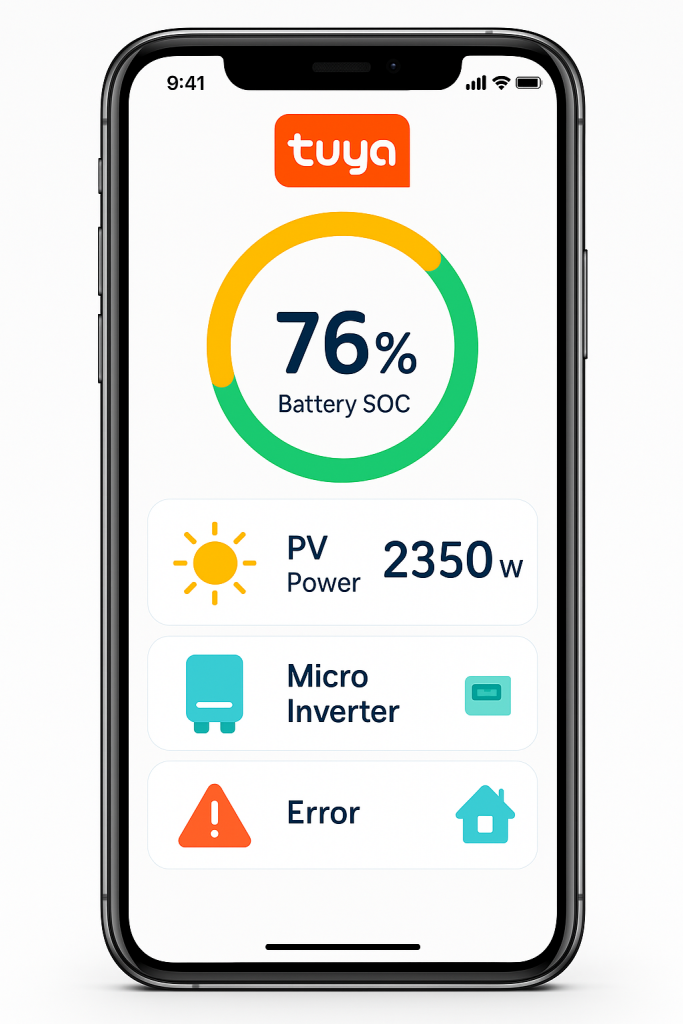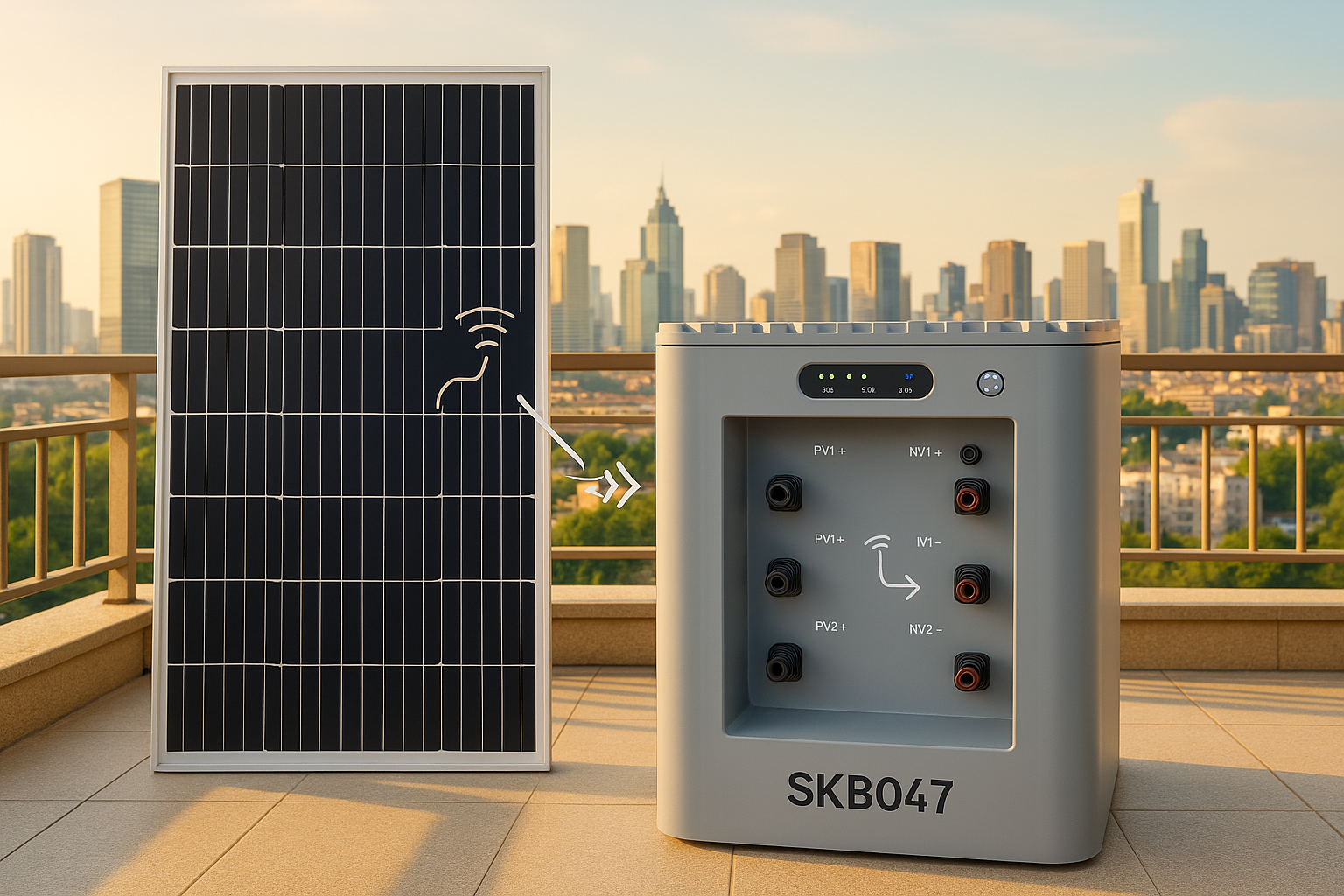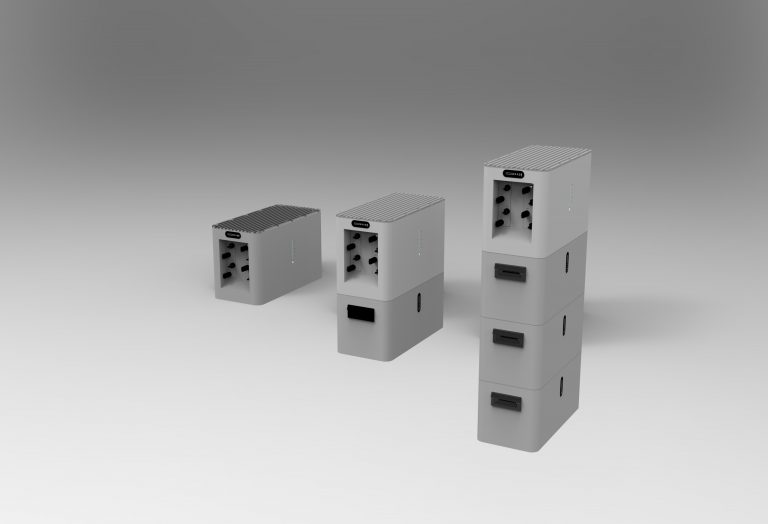1. Introduction
The TUYA Balcony PV Energy Storage All-in-One (SKB047) seamlessly integrates a battery, PV control module, and micro inverter. More importantly, it features an intelligent charge and discharge management strategy that optimizes daily electricity usage and solar power generation. This article delves into its core principles—covering power flow, automatic battery activation, and fault protection—to illustrate how it maximizes efficiency in real-world applications.

2. The Synergy of PV Generation, Battery Charging, Micro Inverter Output, and Grid Consumption
- PV Generation
• With the solar panels connected, the system uses Maximum Power Point Tracking (MPPT) to optimize output in real time.
• Power first goes to battery charging, with any surplus directed to the micro inverter for household usage or export to the grid.
- Battery Charging
• Equipped with a LiFePO₄ battery, the system ensures high cycle life and safety.
• PV-generated DC power prioritizes battery charging, with the remainder feeding into the grid or other loads.
- Micro Inverter Output
• The micro inverter converts DC into AC, then plugs into the home grid.
• The TUYA system dynamically adjusts power to the micro inverter based on battery levels and consumption needs, reducing waste.
- Grid Consumption
• During low sunlight or insufficient battery power, the grid supplies electricity automatically.
• Where regulations permit, excess solar power can be fed back to the grid, enabling a “self-consumption plus export” model that saves on energy costs.

3. Self-Check Function, Automatic Battery Activation, and Fault Prote
Self-Check
• Upon startup, the system inspects battery status, voltage, and current. If the battery isn’t detected within a minute, the device attempts to activate it by providing a small charge. If activation fails, it reroutes PV power directly to the micro inverter.
Automatic Battery Activation
• If the battery is under-voltage, the system periodically charges it with a low current until it’s properly activated.
• This prevents the battery from being permanently depleted and unable to start.
Fault Protection
• In the event of issues like PV input cross-connection, severe overload, or communication errors, the system halts charge/discharge to protect itself.
• Users receive alerts via the app and can respond promptly.
4. Remote Monitoring and Power Flow Adjustment via App
Real-Time Data Visualization
• “Tuya” or “Smart Life” apps provide instant views of power generation, battery levels, and micro inverter output.
Power Flow Configuration
• Users can choose between “Custom Mode” and “Smart Mode” to prioritize battery charging or direct grid feed.
Automatic Fault Alerts
• The system sends alerts for any anomalies, displaying fault codes for remote diagnosis and quicker troubleshooting.

5. Reader Takeaways
• Improved Energy Utilization: Intelligent charge and discharge management ensures seamless cooperation among PV generation, storage, and grid usage.
• Simplicity with Risk Control: Self-check, automatic battery activation, and fault alerts give users peace of mind.
• Remote Monitoring for Convenience: The app offers real-time system insights, eliminating the need for constant supervision.


